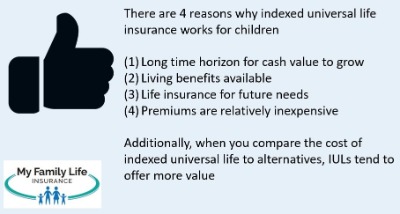All Categories
Featured
There is no one-size-fits-all when it comes to life insurance. Getting your life insurance policy plan ideal takes right into account a number of variables. [video description: Pleasant music plays as Mark Zagurski speaks to the camera.] In your busy life, monetary independence can feel like an impossible goal. And retirement might not be leading of mind, since it appears until now away.
Pension plan, social safety and security, and whatever they 'd managed to save. However it's not that simple today. Fewer companies are using standard pension plans and numerous business have actually decreased or ceased their retired life strategies and your capability to depend only on social safety and security remains in concern. Even if advantages have not been lowered by the time you retire, social protection alone was never ever meant to be enough to pay for the way of life you want and deserve.
/ wp-end-tag > As component of a sound monetary approach, an indexed universal life insurance plan can assist
you take on whatever the future brings. Before devoting to indexed universal life insurance coverage, below are some pros and disadvantages to think about. If you choose a good indexed universal life insurance strategy, you may see your cash value expand in value.
Flexible Premium Life

If you can access it early on, it might be useful to factor it into your. Because indexed universal life insurance policy calls for a certain level of risk, insurance coverage companies tend to maintain 6. This kind of plan also provides (universal life insurance retirement). It is still guaranteed, and you can change the face amount and bikers over time7.
If the selected index does not do well, your cash money worth's growth will be influenced. Typically, the insurer has a vested rate of interest in carrying out better than the index11. There is typically a guaranteed minimum interest rate, so your strategy's growth will not fall below a particular percentage12. These are all variables to be thought about when picking the most effective type of life insurance for you.
Iul Medical Abbreviation

Because this kind of policy is extra intricate and has a financial investment component, it can often come with higher costs than other policies like entire life or term life insurance. If you do not think indexed global life insurance coverage is appropriate for you, here are some options to consider: Term life insurance policy is a short-lived policy that commonly uses insurance coverage for 10 to 30 years.
Indexed universal life insurance policy is a kind of plan that provides more control and adaptability, in addition to greater money value growth capacity. While we do not use indexed global life insurance, we can give you with even more info concerning entire and term life insurance policy plans. We suggest checking out all your options and talking with an Aflac representative to find the best suitable for you and your household.

The remainder is added to the cash money worth of the policy after charges are subtracted. The money value is attributed on a month-to-month or annual basis with interest based upon rises in an equity index. While IUL insurance policy might prove useful to some, it is necessary to recognize exactly how it functions prior to buying a plan.
Latest Posts
Problems With Universal Life Insurance
Best Guaranteed Universal Life Insurance Companies
Iul For Dummies